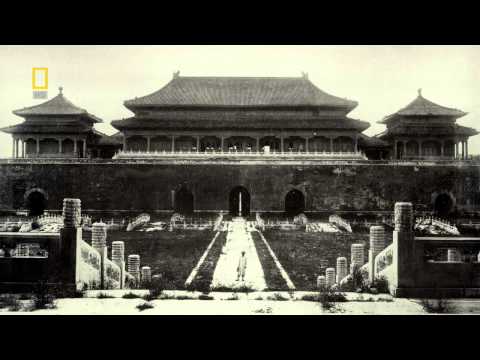
### Introduction
In the heart of Beijing lies one of the most iconic symbols of China’s vast and rich history—the Forbidden City. Known also as the Palace Museum, it served as the imperial palace for emperors across the Ming and Qing dynasties. In this second part of our documentary series, titled “Survival”, we delve deeper into how this majestic palace complex not only served as a royal residence but also played crucial roles in the survival of Chinese culture, tradition, and political power through tumultuous times.
### A Fortress of Power and Tradition
The Forbidden City was constructed under the orders of Yongle Emperor of Ming dynasty and was completed in 1420. Spanning approximately 180 acres with a staggering 980 buildings, it is a testament to architectural grandeur and historical significance. However, its importance goes beyond mere aesthetics; it is a symbol of survival. Each structure within its walls holds stories of political intrigue, cultural preservation, and adaptation which helped shape China’s destiny.
### Architectural Marvel as Means of Survival
One cannot discuss the survival aspects of the Forbidden City without acknowledging its strategic architectural design. The layout based on Feng Shui principles aimed to ward off evil spirits and ensure prosperity. The positioning of halls, gates, and other structures was meticulously planned to reflect cosmic order and Confucian principles which emphasize harmony between humans and nature—key elements that contributed to maintaining stability within the empire.
Moreover, its defensive capabilities—the formidable walls, gates, moats—protected not just against invaders but also helped maintain control over internal power struggles by isolating power within its confines.
### Cultural Reservoir
Throughout centuries, Forbidden City stood as a sanctuary for Chinese culture amidst invasions and internal disputes. Artifacts like paintings, ceramics, scriptures housed here were preserved through dynasty changes from Ming to Qing before turning into a public museum in 1925. These treasures provide insights into Chinese artistry skills but their significance extends further; they represent resilience by acting as conduits for cultural continuity amidst change.
### Political Theatre
The physical survival of an empire often hinges on adept political maneuvering—a fact well illustrated by events within these walls. The complex was not just a royal dwelling; it was an arena for displaying power dynamics through ceremonies designed to project imperial authority while quelling potential rebellions or challenges from nobility or foreign powers.
Each ceremony held at Taihe Hall (Hall of Supreme Harmony), whether coronations or annual rituals like Lunar New Year celebrations reinforced hierarchical systems crucial for administrative stability ensuring longevity both politically and culturally across centuries.
### Legacy: Beyond Bricks
Today’s Palace Museum serves not only as a custodian for ancient relics; it stands as vibrant proof that structures can transcend their initial utilitarian purpose to become keepers of history itself—continually adapting yet faithfully preserving narratives integral to national identity.
In conclusion ‘Survival’ in context with Forbidden City unveils how material constructions can embody immaterial legacies such as resilience against adversities whether they be wars or natural disasters thereby safeguarding civilizations themselves perhaps even inspiring current generations about endurance strength in unity during periods of uncertainty across ages beyond mere bricks mortar forming intrinsic part collective human heritage worldwide.
